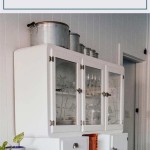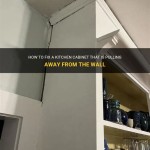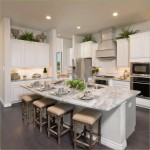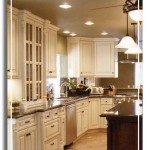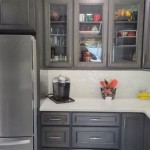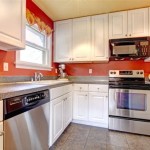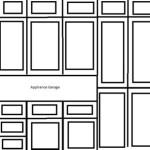Updating Kitchen Cabinets: A Before and After Transformation
Kitchen cabinets often serve as the focal point of the room, significantly influencing its overall aesthetic and functionality. Over time, they can become outdated, worn, or simply fail to meet the evolving needs of a household. Updating kitchen cabinets can breathe new life into the space, enhancing both its visual appeal and practical utility. This process can range from minor cosmetic improvements to complete cabinet replacement, each offering distinct benefits and requiring different levels of investment.
Many homeowners find their kitchens are in desperate need of an update, yet they are hesitant to embark on a full-scale renovation. This hesitation often stems from concerns about cost, disruption, and the perceived complexity of the project. However, numerous approaches exist that can transform kitchen cabinets without breaking the bank or requiring extensive construction. Understanding these approaches and the potential impact they can have is crucial for making informed decisions about cabinet updates.
Refacing Kitchen Cabinets: A Cost-Effective Alternative
Refacing is a popular method for updating kitchen cabinets while preserving the existing cabinet boxes. This technique involves replacing the doors, drawer fronts, and potentially the hardware, as well as applying a new veneer to the exposed surfaces of the cabinet boxes. Refacing offers a significant cost savings compared to complete cabinet replacement, typically ranging from 40% to 50% less. It also minimizes the disruption to the kitchen, as the existing cabinet structure remains intact. The timeline for refacing is generally shorter than a full replacement, often completed within a week.
The veneer used in refacing can be made of various materials, including wood veneer, laminate, and rigid thermofoil (RTF). Wood veneer provides a natural wood appearance and can be stained or painted to match the new doors and drawer fronts. Laminate offers a durable and cost-effective option, available in a wide range of colors and patterns. RTF is a plastic coating that is heat-sealed to the cabinet boxes, offering a seamless and moisture-resistant finish.
When considering refacing, it's important to assess the condition of the existing cabinet boxes. If the boxes are structurally sound and free from significant damage, refacing can be an excellent option. However, if the boxes are warped, water-damaged, or otherwise compromised, complete replacement might be a more prudent investment. It is also vital to choose a reputable contractor with experience in refacing techniques to ensure a professional and long-lasting result. A subpar refacing job can lead to peeling veneer, misaligned doors, and an overall unsatisfactory outcome.
The range of styles and materials available for door and drawer front replacements is vast. From traditional raised-panel designs to sleek, modern slab doors, homeowners can customize the look of their cabinets to match their desired aesthetic. Similarly, hardware choices, such as knobs and pulls, can further enhance the overall style and functionality of the cabinets. Selecting the right combination of materials, styles, and hardware is essential for achieving a cohesive and visually appealing kitchen design.
The “before” picture of a kitchen slated for refacing might show outdated cabinets with worn surfaces and undesirable hardware. The “after” picture would showcase a transformed kitchen with fresh, new doors, drawer fronts, and a revitalized cabinet box finish, all achieved without the expense and disruption of a complete cabinet replacement.
Repainting Kitchen Cabinets: A DIY-Friendly Transformation
Repainting existing kitchen cabinets is one of the most affordable and DIY-friendly methods for updating the kitchen's appearance. While it requires some effort and attention to detail, the results can be dramatic, offering a significant visual upgrade for a relatively low cost. A fresh coat of paint can instantly brighten a kitchen, conceal imperfections, and transform outdated cabinets into a stylish feature.
The key to a successful cabinet repainting project lies in proper preparation. This includes thoroughly cleaning the cabinets to remove grease, dirt, and any loose paint. Sanding the surfaces is crucial for creating a smooth and even base for the new paint to adhere to. Filling any holes or imperfections with wood filler and applying a primer coat are also essential steps. These preparatory measures ensure a professional-looking finish and prevent issues such as peeling or chipping paint.
Choosing the right type of paint is equally important. High-quality paints specifically formulated for cabinets are recommended, as they offer enhanced durability and resistance to moisture and wear. Acrylic latex paints are a popular choice due to their ease of application, low odor, and quick drying time. Oil-based paints provide a harder and more durable finish but require longer drying times and more rigorous cleanup. The selection of paint sheen also impacts the final look. Semi-gloss or gloss finishes are generally preferred for cabinets, as they are easier to clean and offer a more durable surface.
The "before" picture of a kitchen undergoing a cabinet repainting project might depict cabinets with faded paint, outdated colors, or worn surfaces. The "after" picture would reveal a revitalized kitchen with cabinets sporting a fresh, new coat of paint in a modern color, breathing new life into the entire space. Replacing the hardware along with the repaint can further enhance the transformation, adding a touch of elegance and personalization.
Repainting allows for a high degree of customization. Homeowners can choose from a vast array of paint colors to match their desired aesthetic or complement existing kitchen décor. Techniques like distressing or glazing can also be used to add character and depth to the cabinets. This flexibility makes repainting a versatile option for achieving a unique and personalized kitchen design.
Replacing Kitchen Cabinets: A Complete Overhaul
While refacing and repainting offer cost-effective solutions for updating kitchen cabinets, complete cabinet replacement is sometimes the most appropriate or even necessary option. If the existing cabinet boxes are structurally unsound, significantly damaged, or if a major kitchen layout change is desired, replacement becomes the preferred approach. Replacing cabinets provides the opportunity to completely transform the kitchen's appearance and functionality, creating a space that perfectly caters to the homeowner's needs and preferences.
The process of replacing kitchen cabinets involves removing the old cabinets and installing new ones. This can be a more complex and time-consuming project than refacing or repainting, often requiring the expertise of professional installers. It also offers the most design flexibility, allowing homeowners to choose from a wide range of cabinet styles, materials, and configurations.
Stock cabinets are pre-made cabinets that are available in standard sizes and styles. They are the most affordable option and are readily available from home improvement stores and cabinet suppliers. Semi-custom cabinets offer more flexibility than stock cabinets, allowing for some customization in terms of size, style, and features. Custom cabinets are built to order, providing the greatest degree of design flexibility and allowing homeowners to create truly unique and personalized kitchen cabinets. The choice between stock, semi-custom, and custom cabinets depends on budget, design preferences, and specific kitchen requirements.
The "before" picture of a kitchen slated for cabinet replacement might show severely outdated cabinets, an inefficient layout, and perhaps even structural issues. The "after" picture would showcase a completely transformed kitchen with brand-new cabinets that perfectly complement the homeowner's style and enhance the kitchen's functionality. This transformation could include improved storage solutions, a more efficient workflow, and a dramatically enhanced aesthetic.
When planning a complete cabinet replacement, it's crucial to consider the overall kitchen design and layout. Factors such as countertop selection, appliance placement, and flooring choices should be integrated into the cabinet design to create a cohesive and functional kitchen space. Working with a kitchen designer can be beneficial in this process, ensuring that all aspects of the kitchen renovation are carefully considered and coordinated.
Updating kitchen cabinets, whether through refacing, repainting, or replacing, represents a significant investment in the home. The correct approach is largely dictated by budget, the condition of existing cabinets, and the desired level of transformation. Carefully assessing these factors ensures a successful project that enhances both the aesthetic appeal and the practical utility of the kitchen.

15 Diy Kitchen Cabinet Makeovers Before After Photos Of Cabinets

Painting Kitchen Cabinets Before After The Stonybrook House

Gray Kitchen Transformation With Quartz Counters

Diy Painting Your Kitchen Cabinets The Right Way

Our Painted Cabinets Five Years Later Nina Hendrick

Kitchen Cabinet Refacing Makeover A Homeowner S Experience

Kitchen Cabinet Colors Before After The Inspired Room

Update On Our Diy White Painted Kitchen Cabinets 2 Years Later

How To Paint Kitchen Cabinets Without Sanding Or Priming

Kitchen Update Without Remodeling Birkley Lane Interiors
Related Posts


